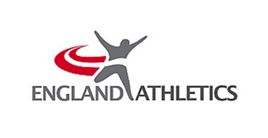- Posted December 18, 2022
Pippa Woolven talks about her elite running career, being diagnosed with RED-S, and how she has learned to thrive again
Pippa Woolven has so many career highlights, it’s hard to fit them into one paragraph. They include:
2× English Schools Steeplechase Champion
4× British University Champion (cross country, steeplechase & duathlon)
8th in Commonwealth Games 3000m steeplechase final
European Cross Country Championships Team Silver Medallist
35th in World Cross Country Championships
Senior Women’s English National Cross Country Championships Runner-Up
Pippa competed at the 2012 World Junior Championships, then earned a scholarship to Florida State University. There she became ill with extreme fatigue and undiagnosed RED-S (Relative Energy Deficiency in Sport). After eventually finding a RED-S specialist to help her overcome the condition from 2017–19, Pippa qualified for the GB team at the 2018 Euro Cross Country Championships, finishing 9th and helping the senior women’s team to a silver medal. In 2021 she retired from competitive running and founded Project RED-S (https://red-s.com/). Its aim is to raise awareness of RED-S to prevent other athletes going through what Pippa did, and to share information and resources for athletes, coaches and supporters.
Pippa, thank you so much for talking to us today. I’d like to ask about your training as a youngster. How did you get into running, and what did you enjoy about it?
Thank you for having me! I got into running via my primary school’s annual cross country race. I came from a super-sporty family, and running seemed to be the one thing I was better at than my siblings, so naturally that spurred me on. I wouldn’t say it was love at first sight, but I enjoyed making gradual progress, and the social side of things. I also loved the satisfaction of finishing a race or training session and being able to relax for the rest of the day. :)
You earned a scholarship to Florida State University in 2013. What was America like? Did your training change from home?
America was a very different environment to back home – world-class facilities but very little individualised support. My training volume not only increased but also intensified as I found myself surrounded by competitive females who helped push me in training. My coach at home was wary about increasing my mileage too quickly, but I had to participate in a group training plan and there wasn’t much scope for personalisation. With hindsight, I know I should have fought for what I thought was right for me, but I wanted to go ‘all in’ and see what I could achieve in the short time I was there.
In the USA, when things started to go wrong, what were your first symptoms of RED-S? And do you think you would have developed RED-S if you had stayed in the UK?
The first physical signs of RED-S were frequent illnesses (coughs, colds) and niggles (hamstrings, calves) that took too long to shift, or that recurred quickly. I was also experiencing some fatigue that I attributed to low iron levels, but when my iron was intravenously boosted, the fatigue persisted. My menstrual cycle had also stopped, but that was masked because I was on the contraceptive pill, so I had no idea. The first psychological signs were a preoccupation with food/training and uncharacteristically low moods/homesickness. I don’t think I would have experienced RED-S had I stayed in the UK, because it seemed to be brought on by being in a new, high-pressure environment, paired with losing the close support system I had built up in the UK.
How did you finally get diagnosed? I understand it was a long process.
It took years to reach a formal diagnosis via a sports endocrine specialist, Dr Nicky Keay. Some months before, I had found out about RED-S via the internet, and it seemed to tick all the boxes. I couldn’t believe it hadn’t been picked up sooner by any of the sports doctors, GPs or even endocrinologists I had seen over the years. We have a long way to go in terms of awareness and understanding of issues related to RED-S within general medical practice.
How many athletes in the UK suffer from RED-S?
It’s very hard to quantify the scale of the problem, but recent estimates suggests as many as 58% of athletes are at risk of RED-S. We need far more data on prevalence rates, but statistics about eating disorders/exercise addiction (which can be related to RED-S, though not always) are worrying.
If an athlete suspects they may have RED-S, what should they do?
They should reach out to someone with RED-S knowledge/experience as early as possible, and ask for support. There’s a detailed list of specialist support services on www.red-s.com – and athletes should know that they are not alone.
What have you changed so you can keep training and racing now?
I spent several years recovering from RED-S – and during that time I redefined the role that running played in my life. I still love participating but I don’t rely on it for my satisfaction or self-worth. I think that learning how to strike a balance and maintain other interests/pursuits is essential.
****
Pippa got a new PB at the Glasgow Commonwealth Games. She raced the 3,000 metres steeplechase final in just under 9:48, knocking 7 seconds off her previous PB and finishing eighth.
What was it like competing in the Glasgow Commonwealth Games?
It was incredible. I’ll never forget the moment I walked out into the stadium and managed to spot my parents in the crowd. I was almost in tears on the start line, it was so emotional. I was, however, disappointed with my performance and knew I could have done better if I’d been fully healthy and well rested.
What achievement are you most proud of in your athletics career?
Finishing 14th at the Liverpool European XC trials in 2021. I realised that I could still enjoy racing, while narrowly missing out on GB selection (by one place). I also found out what a well-nourished, well-rested body felt like and what it could do for me. I was running less than 40 miles a week, eating whatever I wanted and working full-time. I wish I’d known sooner that this was possible!
What’s the best piece of advice your coach has ever given you?
Andy Walling once said to me: think about your season like making a cake. You must add a layer at a time and wait until the last minute for the icing. If you rush the process, you’ll end up with a mess.
What’s your favourite pre-race meal?
Some kind of chicken/salmon and rice/noodle stir-fry with a good ratio of carbs, protein and enjoyment!
What advice would you give a teenage girl to keep her running healthy, instead of losing the balance?
I would say that running is something you do, but not all you do. Try not to let it play an outsized role in your life – and always remember that you are more than just an athlete.
Pippa, thank you so much! What you are doing to raise awareness of RED-S is so valuable; I’m sure it will make a huge difference to so many athletes.
We wish you the best of luck for the rest of the XC season.





